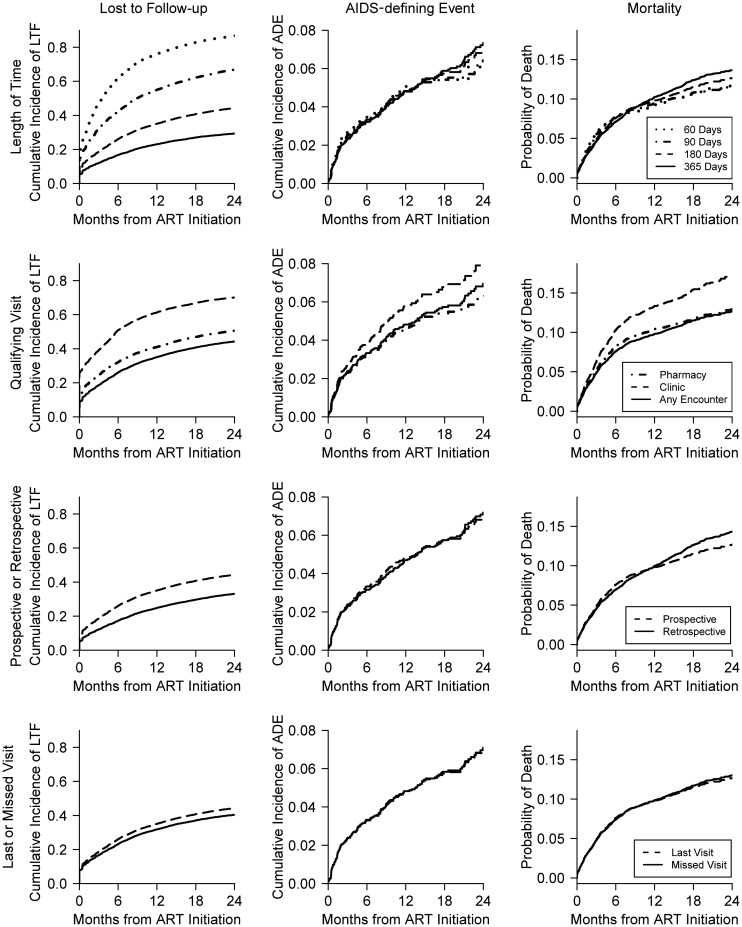Figure 2.
Impact of varying specific components of the lost to follow-up definition, Mozambican cohort, 2006–2011. We investigated the impact of various components of the definition of LTF on estimates. All estimates are centered at a definition that classifies patients as LTF if they go 180 days from their last visit without any encounter (180 days, any encounters, prospective, time from last visit). The rows demonstrate the sensitivity of results to variation in these choices: The top row varies the length of time, the second row (from the top) varies what qualifies as a clinic visit, the third row compares prospective and retrospective definitions, and the bottom row compares time from last visit with time from missed visit. The columns correspond to the different study outcomes: The first column contains the cumulative incidence of LTF, the second column contains the cumulative incidence of AIDS-defining events (ADE), and the third column contains the probability of death. AIDS, acquired immunodeficiency syndrome; ART, antiretroviral therapy; LTF, lost to follow-up.

